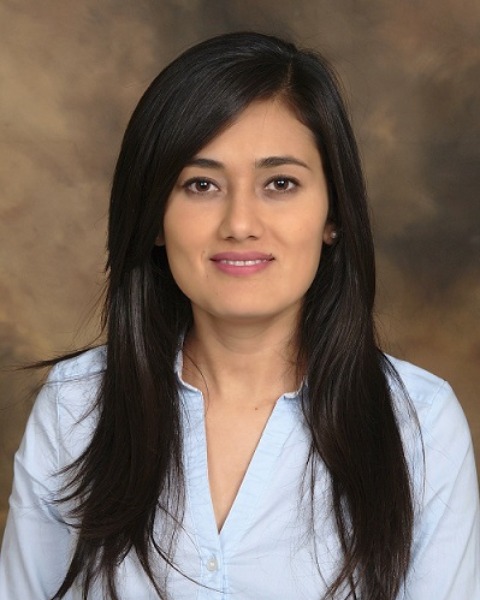Back


Poster Session D - Tuesday Morning
Category: Small Intestine
D0675 - Small Bowel Intussusception Secondary to a Large Lipoma Presenting as Acute Gastrointestinal Bleeding
Tuesday, October 25, 2022
10:00 AM – 12:00 PM ET
Location: Crown Ballroom

Has Audio

Estefania M. Flores, MD
University of Iowa Hospitals and Clinics
Iowa City, IA
Presenting Author(s)
Estefania M. Flores, MD, Mohammad Ansari, MD, James De Andrade, MD, Nadav Sahar, MD
University of Iowa Hospitals and Clinics, Iowa City, IA
Introduction: Small bowel intussusception in adults is a rare disorder that represents less than 5% of all intussusception cases. This entity in adults is frequently associated with secondary causes such as benign and malignant tumors. We present a rare case of adult intussusception due to a small bowel lipoma, presenting with acute gastrointestinal bleeding without abdominal pain, treated successfully with surgical resection.
Case Description/Methods: A 28-year-old male with chronic headaches and daily ibuprofen use for 4 months presented with acute onset of hematochezia. Physical exam was remarkable for tachycardia to 130 bpm. Abdomen was soft and non-tender. Levels of hemoglobin were 6.5 g/dL and required blood transfusion. Esophagogastroduodenoscopy and colonoscopy were performed and were notable for fresh blood seen in the terminal ileum, thought to be originating from a more proximal small bowel source. CT angiogram of the abdomen was obtained and showed a fat density lesion within a loop of small bowel and a 15 cm segment of small bowel wall thickening at this level and proximal to it, representing a segment of intussusception. Diagnostic laparoscopic surgery was performed. Small bowel intussusception was found in the mid ileum around a soft intraluminal polypoid protrusion, and subsequently, 20 cm of small bowel were resected. Pathologic examination revealed a 10 x 3 x 3 cm polypoid protrusion consistent with a submucosal lipoma serving as an intussusception lead point. The polypoid protrusion was indurated and ulcerated at the tips. The postoperative course was uneventful, and the patient was discharged after two days.
Discussion: Intussusception in adults is often a challenging diagnosis with non-specific signs that require high clinical suspicion. History, physical exam, and blood tests can aid in the process, but imaging is usually needed to establish the diagnosis. Nearly 90% of cases of intussusception have a pathological lead point, most commonly a neoplasm. Herein, we report a rare case were a lipoma was the cause of intussusception. Interestingly, this patient presented with an acute bleed and drop in hemoglobin, possibly related to ischemia from the telescoping of the bowel and the development of ulcerations that were also demonstrated on final pathology. Lipomas of the small intestine are rare benign tumors with no malignant potential and are usually asymptomatic. Early recognition is critical since definitive treatment of intussusception is surgical intervention and should not be delayed.

Disclosures:
Estefania M. Flores, MD, Mohammad Ansari, MD, James De Andrade, MD, Nadav Sahar, MD. D0675 - Small Bowel Intussusception Secondary to a Large Lipoma Presenting as Acute Gastrointestinal Bleeding, ACG 2022 Annual Scientific Meeting Abstracts. Charlotte, NC: American College of Gastroenterology.
University of Iowa Hospitals and Clinics, Iowa City, IA
Introduction: Small bowel intussusception in adults is a rare disorder that represents less than 5% of all intussusception cases. This entity in adults is frequently associated with secondary causes such as benign and malignant tumors. We present a rare case of adult intussusception due to a small bowel lipoma, presenting with acute gastrointestinal bleeding without abdominal pain, treated successfully with surgical resection.
Case Description/Methods: A 28-year-old male with chronic headaches and daily ibuprofen use for 4 months presented with acute onset of hematochezia. Physical exam was remarkable for tachycardia to 130 bpm. Abdomen was soft and non-tender. Levels of hemoglobin were 6.5 g/dL and required blood transfusion. Esophagogastroduodenoscopy and colonoscopy were performed and were notable for fresh blood seen in the terminal ileum, thought to be originating from a more proximal small bowel source. CT angiogram of the abdomen was obtained and showed a fat density lesion within a loop of small bowel and a 15 cm segment of small bowel wall thickening at this level and proximal to it, representing a segment of intussusception. Diagnostic laparoscopic surgery was performed. Small bowel intussusception was found in the mid ileum around a soft intraluminal polypoid protrusion, and subsequently, 20 cm of small bowel were resected. Pathologic examination revealed a 10 x 3 x 3 cm polypoid protrusion consistent with a submucosal lipoma serving as an intussusception lead point. The polypoid protrusion was indurated and ulcerated at the tips. The postoperative course was uneventful, and the patient was discharged after two days.
Discussion: Intussusception in adults is often a challenging diagnosis with non-specific signs that require high clinical suspicion. History, physical exam, and blood tests can aid in the process, but imaging is usually needed to establish the diagnosis. Nearly 90% of cases of intussusception have a pathological lead point, most commonly a neoplasm. Herein, we report a rare case were a lipoma was the cause of intussusception. Interestingly, this patient presented with an acute bleed and drop in hemoglobin, possibly related to ischemia from the telescoping of the bowel and the development of ulcerations that were also demonstrated on final pathology. Lipomas of the small intestine are rare benign tumors with no malignant potential and are usually asymptomatic. Early recognition is critical since definitive treatment of intussusception is surgical intervention and should not be delayed.

Figure: A large fat density lesion with some septations measuring 3.7 cm. There is surrounding marked thickening of the loop of small bowel proximal to this extending over a length of 15.2 cm, representing a segment of intussusception.
Disclosures:
Estefania Flores indicated no relevant financial relationships.
Mohammad Ansari indicated no relevant financial relationships.
James De Andrade indicated no relevant financial relationships.
Nadav Sahar indicated no relevant financial relationships.
Estefania M. Flores, MD, Mohammad Ansari, MD, James De Andrade, MD, Nadav Sahar, MD. D0675 - Small Bowel Intussusception Secondary to a Large Lipoma Presenting as Acute Gastrointestinal Bleeding, ACG 2022 Annual Scientific Meeting Abstracts. Charlotte, NC: American College of Gastroenterology.
